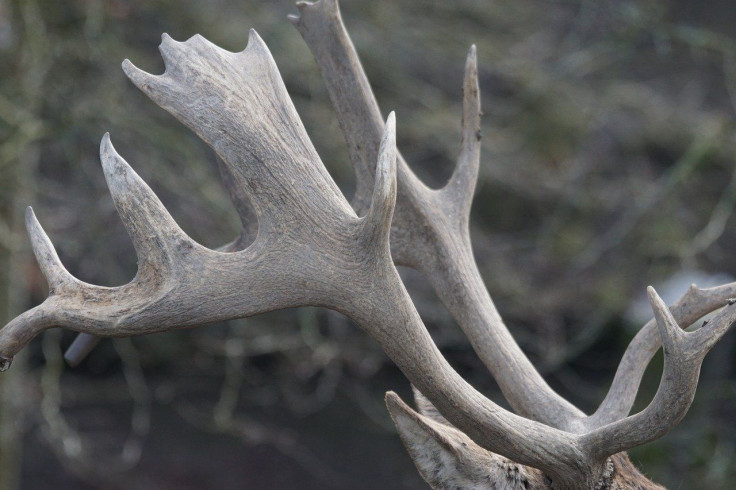Deer With Bloody Antlers Have Been Spotted In Smoky Mountains. Here's Why
KEY POINTS
- White-tailed deer with bloody-looking antlers are gearing up for mating season
- This is a "healthy and painful process" to shed their antlers' velvet
- Small mammals consume antlers when deer shed them after the mating season
There have been rather scary sightings around the Great Smoky Mountains in the past weeks -- deer with blood dripping from their antlers.
The white-tailed deer have been spotted roaming the Great Smoky Mountains National Park, The Charlotte Observer reported. The creatures may even have bits of "stringy material" dangling from their bloody antlers, the national park noted in a Facebook post over the weekend. The post was accompanied by a scary shot of a deer with its blood-stained antlers.
As gruesome as it may sound, there is actually a simple explanation for it. The deer are reportedly neither sick nor injured. Instead, this is something that normally happens to the species before the mating season or the "rut."
"While it can seem jarring and painful, this is a healthy and painless process for shedding their velvet, a protective layer of skin tissue packed with blood vessels and nerves," the park explained in the post. "Before the rut begins, a buck will scrape the velvet away on trees and bushes, allowing his antlers to harden."
See posts, photos and more on Facebook.
The velvet coating the creatures' antlers aren't just fuzzy coverings, however, as they actually nourish the antlers for months during their growth period. The velvet even helps make deer antlers the fastest growing tissue among mammals.
With their grown antlers, the deer can forage and dig under the snow and most importantly, fight other males to win over females during the rut.
"The velvet is nutritionally dense and will sometimes be ingested by the deer," the park explained. "After rutting season, a buck will drop his antlers and the cycle repeats."
Deer typically grow their antlers starting in April or May and continue growing them in the subsequent months. After the breeding season and once the deer shed their antlers, some time from early December through March, small mammals like squirrels and mice eat the antlers for their calcium.
The park's post has so far garnered more than 3,000 reactions and more than 100 comments, with many people thanking the park for the information while others poked a bit of fun at the scary appearance of the deer.
A netizen even shared a photo of another deer, also with its "freshly shed velvet," while others wondered if it truly is a painless process for deer.

© Copyright IBTimes 2025. All rights reserved.






















